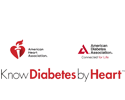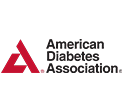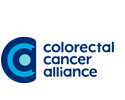Taking Support for MASH Patients into the Community
The Community Liver Alliance (CLA) brands itself as an organization dedicated to global awareness and local impact. Even as the CLA has extended its beacon of hope to communities nationwide, the nonprofit still counts its hometown of Pittsburgh as its primary link to liver disease patients, providers, and caregivers.
CLA’s mission to invest in local communities and give voice to patients and providers is reflected in the many ways the nonprofit supports the Metabolic Dysfunction-Associated Steatohepatitis (MASH) community in Pittsburgh and beyond.
“The MASH community faces significant unmet needs in terms of early diagnosis, awareness, and patient education,” said Suzanna Masartis, Chief Executive Officer, CLA. “MASH is increasingly prevalent due to rising obesity rates and metabolic syndrome, but it remains underdiagnosed, with many patients unaware of their condition until advanced stages. The CLA aims to bridge these gaps by fostering awareness and providing resources to patients and health care providers to improve outcomes.”
Understanding the MASH Patient’s Journey
To better understand the MASH patient’s journey, CLA conducts an ongoing MASH patient survey. In addition to making the survey available 24/7 online, CLA pushes it out through social media, patient and provider communications and programming, and to a coalition of MASH subject matter experts, patients, and caregivers. The survey collects information regarding MASH risk factors; symptoms; limitations; and social, economic, and psychological impacts; as well as barriers to improving liver health.
“Survey results to-date show that a large proportion of respondents are unaware of MASH prior to diagnosis and feel unprepared to manage the condition due to a lack of educational materials,” Masartis said. “This feedback highlights the need for more accessible resources and clearer communication between health care providers and patients.”
Masartis added that communication between providers and patients is especially crucial in the primary care setting so that more providers offer early screening to people at high risk for developing MASH and more high-risk patients know to ask for such screening if their doctor does not recommend it first. Indeed, current survey results show that more than 40% of MASH patients were diagnosed with fatty liver while being treated for another condition.
MASH Toolkits
To help improve patient-provider communication, CLA is partnering with gastrointestinal and internal medicine physicians at Allegheny Health Network (AHN) to develop downloadable patient-and provider-specific toolkits. The primary objective of the toolkit program is to foster collaboration that drives significant advancements in the understanding, diagnosis, treatment, and prevention of liver diseases. Further, the toolkits immerse AHN physicians in the core of the liver disease patient community, enriching their practical knowledge through hands-on, real-world experience.
“These toolkits are an excellent example of meeting people where they are,” Masartis said. “The importance of patient engagement and education in their health care can hardly be overstated. It has a profound impact on health outcomes, patient satisfaction, and the overall effectiveness of health care delivery. When patients are well-informed about their conditions, treatment options, and preventive measures, they are better equipped to make decisions that align with their goals and values.”
Once launched, the MASH Patient Toolkit will include information about:
- What MASH is
- How MASH is diagnosed
- How MASH is treated and managed
- Liver health strategies such as:
- Healthy cooking
- Physical activity
- Mindfulness
- Resources available to MASH patients and caregivers
The MASH Provider Toolkit will provide primary care providers with the information and resources necessary to manage patients through their liver disease journey, including:
- An overview of MASH
- MASH pathophysiology and epidemiology
- MASH diagnosis
- MASH treatment and management
- Patient education and counseling
By early next year, both toolkits will be available nationwide and will be updated regularly as new research, resources, and guidelines become available.
MASH Challenge
Another way CLA is engaging with patients, providers and other stakeholders is through its MASH Challenge – a high-value health care program designed to improve patients’ health through medical, physical, nutritional, and behavioral cornerstones. Developed in conjunction with physicians at AHN and experts from the MASH Coalition, the MASH Challenge just concluded a two-year pilot and was formally launched at CLA’s annual Walk the Talk for Liver Health in mid-October.
Participants at the family-friendly Halloween-themed Walk had the opportunity to take part in a costume contest, see a chef demonstrate how to make healthy meals, build their own healthy breakfast from a parfait bar, be led in pre- and post-walk stretches by an exercise physiologist, and visit a variety of health information tents.
“The MASH Challenge achieved some good early milestones in patient recruitment and the development of personalized health management plans,” Masartis said. “The program’s focus on lifestyle interventions, including diet and physical activity, has shown promise in improving liver health markers. We’re eager to see how patients will engage with the program as we continue to roll it out.”
Addressing Disparities in Liver Disease
While fatty liver diseases such as MASH occur in people of all races and ethnicities, they are most common among Hispanic individuals, followed by non-Hispanic whites and Asian Americans.
To address health disparities in the MASH patient community, CLA held a virtual Addressing Disparities in Liver Disease program last month. The program was created to examine the differences that occur by gender, race, or ethnicity; education or income; disability; geographic location; or sexual orientation. It engaged patients and providers in diverse and high-risk communities and worked to build bridges to health care, services and resources.
“The conference highlighted the importance of culturally tailored interventions and addressed social determinants of health, such as food insecurity and physical activity, which contribute to higher rates of MASH in underserved populations,” Masartis said, noting that a follow-up conference is scheduled for April 2025 to discuss concrete ways in which disparities can be overcome.
Engage with CLA
Masartis encourages providers, patients, and caregivers to engage with CLA, pointing to the organization’s video library, which houses a series of short videos on topics such as nutrition, healthy meal preparation, and physical activity, along with videos from a variety of liver health conferences and events.
She also invited everyone in the MASH and liver diseases communities to connect with CLA on Facebook, Instagram, Twitter/X, and LinkedIn.



















